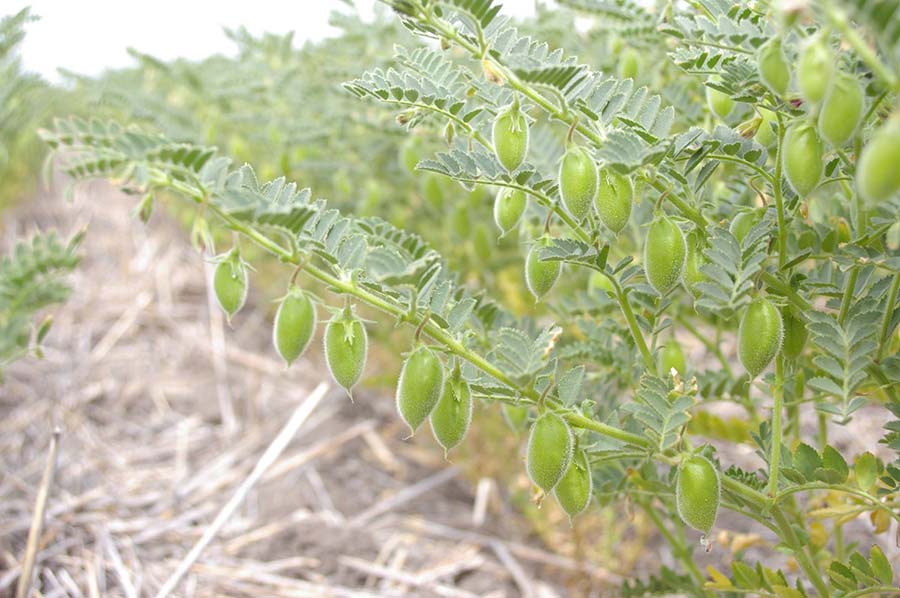
Chickpeas will be one grain legume to benefit from the new research program. Photo: GRDC
GROWER Group Alliance (GGA) will lead a project to engage growers right across the Western Australia wheatbelt in an effort to increase grain legume production in the state by 24 per cent by 2026.
Thanks to investment from the Grains Research and Development Corporation (GRDC), the initiative will demonstrate best practice production of modern varieties of a range of legumes, including lentils, chickpeas, lupins and faba beans.
GGA program broker Mark Holland said WA growers were aware of the benefits of having grain legumes in their cropping rotation, but were frustrated by their inconsistent performance.
“As well as best practice production, this research will also explore the enhanced capabilities of modern grain legume varieties that have become available in recent years through advances in genetics, management and crop protection products,” Mr Holland said.
“We will be measuring the impact of grain legumes to the rotation in terms of both crop yield and the benefit to following crops in nitrogen fixation and reduced inputs.
“The trials are being driven by the various grower groups and what their grower members want to see, including legume response to different crop protection treatments, soil amelioration, new varieties and nutrition responses.”
Five different trials are planned for 2022.

GGA Program Broker Mark Holland
The Esperance zone will host lentil trials, disease control and response will be explored with faba beans in Albany, numerous species will be planted in trials at Wickepin, chickpeas will be the focus at Merredin and the response of lupins to phosphorus and potassium treatments will be studied at Mingenew.
The grower groups will be supported by Department of Primary Industries and Regional Development senior research scientist Mark Seymour and Farmanco consultant Ben Curtis, who will provide technical advice and guidance throughout the project.
“We are looking forward to demonstrating the important role grain legumes can play in western cropping rotations,” Mr Holland said.
“With high prices for nitrogen fertilisers, it’s more important than ever we have functional legumes included in the rotation.”
GRDC grower services manager – west, Jo Wheeler, said Western Grower Network members and other growers have ranked the inability and inconsistency of growing profitable grain legumes as their second highest issue impacting their whole farm business profitability.
“This project will be designed to highlight the optimum agronomy required to maximise yields of grain legumes across a range of environments and soil types, and to determine which grain legumes have the best economic fit in each sub-region, under grower conditions and situations,” Ms Wheeler said.
“The agronomic information to be used to create trial protocols will be drawn from current research projects being conducted in the western region, including the High Value Pulses project, Maintenance of Rhizobial Germplasm project, the Nitrogen Fixation project, the Dryland Legume Pastures Systems project and the national investment, ‘Matching adapted pulse genotypes with soil and climate to maximise yield and profit, with manageable risk in Australian cropping systems.’”
Source: GRDC

I grew one of the first Uni White Lupin crops in the Chapman Valley in the 70s. They were to be the crop to transform the sand plain. We knew, we saw their potential. The ladies even made scones out of some meal for a meeting at Watheroo and Stan followed a shipload to Europe where they went into stock feed, the ‘ship of gold’ he called it.
This move is good to see but begs the question ‘What on earth has been going on for the last fifty years? The answer it seems, is very little.